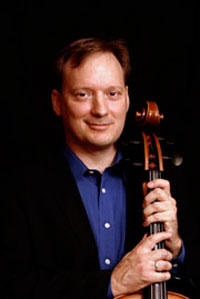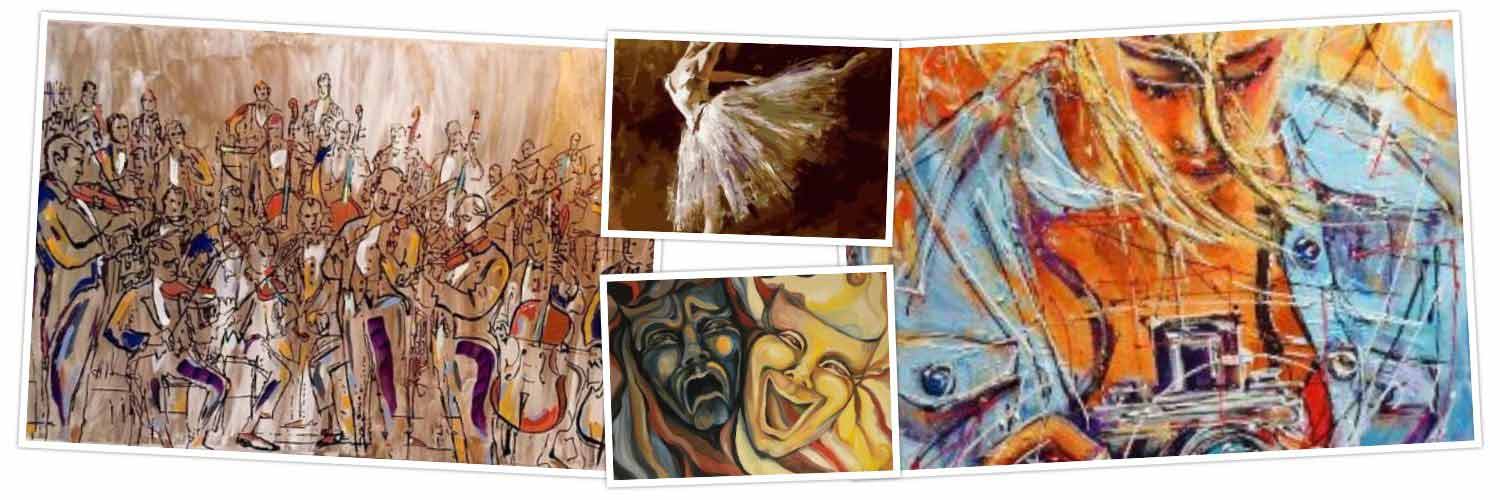Ken Freudigman- Artistic Director, Camerata San Antonio
By JASMINA WELLINGHOFF, Editor —
Camerata’s next concert, The Beautiful Soul, is coming up Nov. 15-17. What’s on the program and how did you make the choices that you made?
This particular program has three works on it. It focuses on the music of Johannes Brahms, Clara Schumann, and also Ernst von Dohnanyi. It’s set up this way for two reasons: one is musical and one is practical. The musical reason is that the Brahms’ Quartet in A major is a wonderful work to introduce to San Antonio. It hasn’t been performed here in a very long time. It’s a big work, 50-minutes long, and one of Brahms’ masterworks, and I built the entire program around it. You may know that there was a relationship between Brahms and Clara Schumann. There’s no documentation that they were together but there was certainly love between them. So that’s why Clara Schumann was included. The practical reason is this: Our first violinist, Matthew Zerweck and his wife just had a baby (and he could not participate), so we are doing a piano quartet with Viktor Valkov instead of a string quartet.

Valkov has been appearing fairly often on concert stages
here. Has he moved to San Antonio?
No, he lives in Utah but is here all the time. He’s the pianist for
Camerata San Antonio. He’s such a wonderful pianist and collaborator.
More generally speaking, how do you put a season
together?
It’s hard because there’s so much music and so little time. We are now in
our 17th season. Since the founding we have performed more than 450
works. I was looking at the list the other day (and realized) we repeated only
10 works in all that time. Creating a season often involves finding new pieces
or choosing works that one of us knows well or loves deeply, but always with an
eye for works that we have not performed as a group, here in San Antonio. I always
ask the players if there’s something they want to play and I am always amazed
at what they come up with.
Why did you choose the cello?
The reason I was drawn to it as young man is that it is the only instrument, especially in the string family, that has the whole range of the human voice. When I am performing, I can be a bass/baritone or I can be a tenor, a mezzo or soprano. The cello is the only instrument that can do all the voices… Years ago we did a program with 12 cellos on stage and you could hear the entire range. We had soprano cellos and bass cellos.

Can you mention some of your favorite cello works?
I do love the music of Brahms, like the quartet we’ll be doing, but almost
anything that’s big and romantic where I can put my heart on my sleeve and go,
that makes me very happy.
You are also the principal cellist for the San Antonio
Symphony. How do you feel about the departure of music director Sebastian
Lang-Lessing?
With every orchestra there comes a time when the music director moves on. I
am sad to see him go because I think he’s a brilliant musician and I think he
has transformed this orchestra. There’s a sense of unanimity in the orchestra
and the way we play. So, there is great music-making happening. We’ve grown a
lot as an orchestra.
You have been part of a number of symphony orchestras
before coming here. What made you decide to settle in San Antonio?
I had spent the previous year playing with the Mexico City Philharmonic and
was looking for a place to put down roots. I didn’t really want to come to
Texas but then I came to San Antonio and I was like, “Hey, this is really nice!”
I’ve been here for nineteen years, longer than I spent even in my hometown.
This is the place where I wanted to stay, build my career and give back to the
community. As you know, I do a lot more than the Symphony; I wear many hats (as
teacher, conductor, Camerata leader).
And you also met your wife, Emily Watkins, here, who is
also a member of the San Antonio Symphony. What are the advantages or perhaps
disadvantages of such a situation?
I can’t think of any disadvantages. We met in 2003 when she came to San
Antonio. Immediately, there was incredible respect for her as an artist. Our
relationship grew out of that. We have that same working relationship in our
marriage as well. I love her to death! (laughs)
Beyond music, what are your other interests?
I have a lot of them. I am an avid runner and a cyclist, but my most recent
thing is that I am a ceramic artist; I make pottery. When I was a student at
the Interlochen Center for the Arts, I would always pass by the art department
and I would see them working at the wheel, and I was fascinated by it. Well,
last Christmas, my wife bought me a class at the Southwest School of Art and
nine months later, I have my own wheel, my own kiln, my own website (Primocello
Ceramics). And I’ll have my pottery for sale Nov. 30, as part of the San
Antonio Potters Guilt event at the San Antonio Museum of Art.
What’s your favorite holiday?
I love Christmas time.
What is the
hardest thing you have ever done?
The hardest thing? (pauses) … Managing the death of my parents. That was
very hard. My mother was down here – came for a concert – but became very ill,
spending eight weeks in the hospital. We did get her home eventually but she
passed away not long after that. You are never prepared for something like
that, so it was hard but it was also wonderful to be with her all the way to
the end.
If you could spend a day with anyone, dead or alive,
outside of immediate family, who would you like to hang out with?
I would love to spend the day with Joseph Haydn. Judging from his music,
this man obviously had a wicked sense of humor. I would love to sit down, have
a meal with him and listen to all his stories. And another person would be
Beethoven. He probably would yell at me because it seems that’s what he did
sometimes; he was apparently a fairly difficult person.
Do you have a little post-concert ritual?
(laughs) I love fine whiskey, so, I would often have a nice single malt
after a concert and just relax.
What was the most surprising thing that an audience
member has ever said to you?
(After some thinking) Oh, I remember one time there was a patron who came
up to me and was so nervous to meet me, so I reached out and said hello and she
said “Oh, my goodness, I touched your hand!” I thought about that and
talked with others about it. Audience members often think that musicians are
more like magicians, doing unbelievable feats of musical magic. We put our
pants on one leg at the time like everyone else. It’s just that there’s an
incredible amount of work that goes into what we are doing.
There is a meme going around that addresses this issue. An audience member asks a performer “How do you do it?” “I practice,” (says the performer.) “It must be magic!” “I practice” (repeats the performer). “There must be something else going on!” “I work hard and I practice.” (says the performer again). And that’s true. Musicians work incredibly hard to get where we are at a professional level.
If you could change one thing in San Antonio’s public
life, what would it be?
I would increase support for the arts. I believe that the arts are key to
the health of the city. They are important for our children and a vibrant arts
community also attract business. I think the government should find a way to
support the arts so they can thrive.
The Beautiful Soul, Nov. 15, 7:30 p.m. Boerne, First
United Methodist Church, 205 E. James; Nov. 16, 3 p.m. Kerrville, Rodman Steel
Recital Hall/Junkin Worship Center at Schreiner University, 2100 Memorial Blvd;
Nov. 17. 3 p.m. Palo Alto College, 1400 W Willaret. For tickets info go to https://cameratasa.orgOn the program: C. Schumann: Three Romances for Violin and Piano;
Dohnanyi: Serenade for String Trio; Brahms: Piano Quartet in A major, Op. 26
